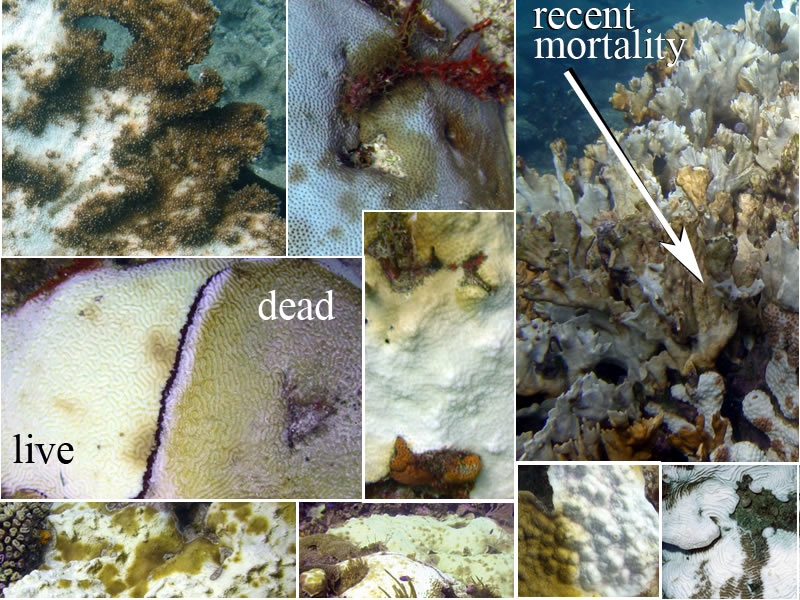 Official websites use .gov
A .gov website belongs to an official government organization in the United States. Official websites use .gov
A .gov website belongs to an official government organization in the United States. |
 Secure .gov websites use HTTPS
A lock or https:// means you’ve safely connected to the .gov website. Share sensitive information only on official, secure websites. Secure .gov websites use HTTPS
A lock or https:// means you’ve safely connected to the .gov website. Share sensitive information only on official, secure websites. |
Solutions today for reefs tomorrow
Home » Coral Disease » Characterized Diseases » Discolored Tissue and Bleaching

Similar conditions: Bleaching can be misidentified as:
Bleaching affects the entire colony (B, C, H), upper surfaces (F), the base, or focal to multifocal patches (I,P). Coloration may vary from pale to white within individual species (L-N); white irregular patches of tissue loss may occur near bleached areas (L). Corals that bleach (C) may recover (D). A scale of bleaching from 1-5 can be used: 1= white; 2= light yellow; 3=yellow; 4= light brown; 5= normal.
Severity of bleaching can range from: pale: colonies that are lighter than normal; partially bleached: the loss of some or all color in a random mosaic pattern; mostly bleached: colonies that are uniformly pale yellow to off white; and fully bleached: colonies that appear uniformly white and the skeleton is seen through translucent coral tissue; Other patterns of bleaching also occur including ring bleaching : rings of pale or white tissue up to 4 cm in diameter and 2-5 mm in width, each with a center of unbleached tissue.
Bleached colonies may exhibit a distinct blue (K), yellow, green, or reddish (N) fluorescence. Corals that bleach may be more susceptible to other diseases such as BBD (O).
The CDHC is a network of scientists, managers, and agency representatives devoted to understanding coral health and disease.
Funding support provided by NOAA CRCP
Web hosting by NOAA NCCOS
Coral Disease and Health Consortium
Hollings Marine Laboratory
331 Fort Johnson Road
Charleston, SC 29412 USA
Email: cdhc.coral@noaa.gov